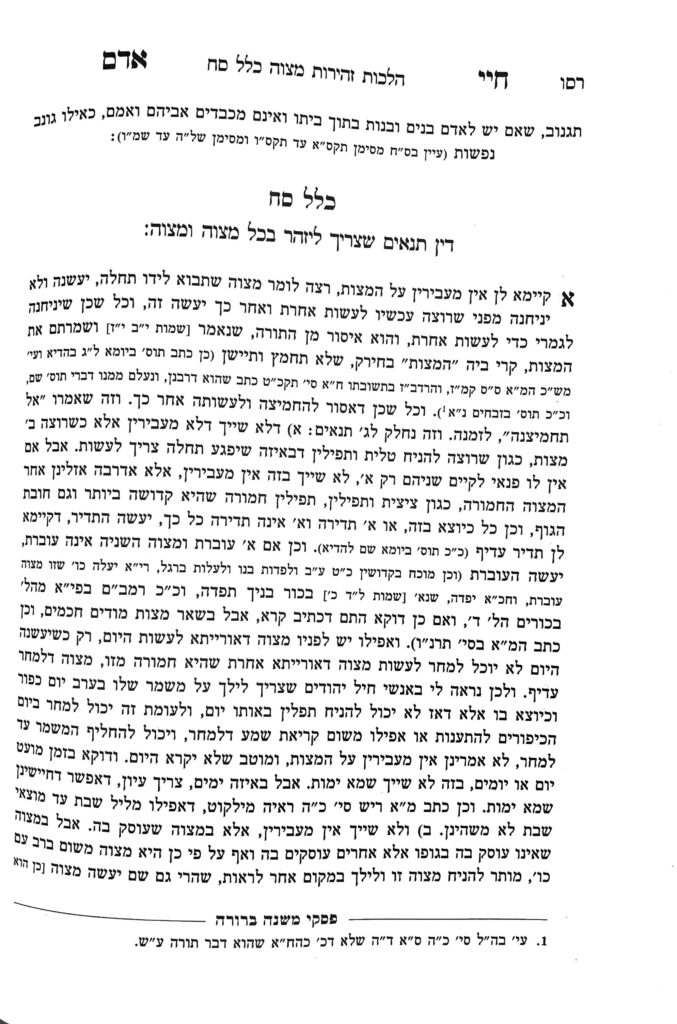We are beginning siman 1. The Chayei Adam writes that one should not be maavir al hamitzvos, meaning, that if one is presented with the opportunity to perform two mitzvos, and comes upon one of them first, he is not allowed to ignore that mitzvah in order to perform the other. One may not leave the mitzvah already in front of them in order to perform another mitzvah, even if they plan to return to the first mitzvah later. Certainly, one may not give precedence to the other mitzvah if it means that they will lose the opportunity to perform the first mitzvah which is already upon them.
As we learned yesterday, the Chayei Adam learns that this is a din deoraysa. It is not one of the taryag mitzvos, but it is an aveirah on a Torah level. The Chayei Adam explains that the pasuk says ushmartem es hamatzos, a person must guard their matzos. In context, the pasuk refers to ensuring the matzos do not sit for too long and become chametz. However, Chazal make a drasha to learn that one can read the word matzos as mitzvos (with a chirik under the mem). Thus, the pasuk teaches us to “guard” the mitzvos, in the sense that one must be careful to fulfill them properly and take care of them properly. The Chayei Adam understands that passing over one mitzvah for another would be considered not taking proper care of a mitzvah, as it would be letting the mitzvah “sit around” and become chametz, so to say. Thus, Chazal learn that the proper time to perform a mitzvah is immediately, without letting it become “chametz”. This drasha certainly applies when there is no other mitzvah in question, and the Chayei Adam is teaching us that it applies between multiple mitzvos as well.
If a person is ma’avir al hamitzvah, and then realizes their transgression, once they have chosen the other mitzvah they should continue with it, because switching back to the original mitzvah would again transgress ma’avir al hamitzos vis a vis the second mitzvah. For example, if one inadvertently took their tefillin before their tallis and realized their mistake, they should continue with their tefillin and put on their tallis after.
If they realize their mistake, put down their tefillin and took out their tallis, although they should not have put their tefillin down, once they did, they should not switch back to them, because switching back again would be ma’avir on the tallis.
Summary
- Ein ma’avirin al hamitzvos teaches us that one cannot pass over one mitzvah in order to perform another.
- An application of this halacha is that one cannot pass over their tefillin in order to put on their tallis, so they should arrange their tallis bag in a way that they encounter their tallis first.
- If one took out their tefillin first, they should not switch back to their tallis, as doing so would be ma’avir on the tefillin.
- If one did switch back, and is now holding their tallis, they should put their tallis on, because switching back to the tefillin would be ma’avir on their tallis.



